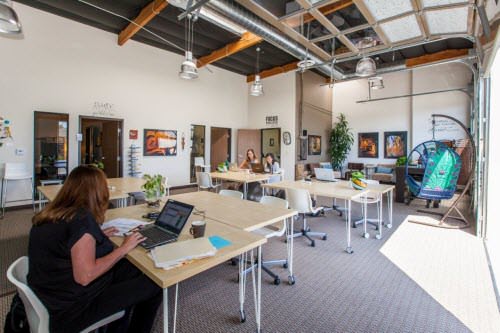Converting an empty office into a coworking space isn’t cheap; doing so requires you to pay for rent, buy furniture, and even perhaps a fancy coffeemaker. While the cost of renting out of a restaurant office space including a coworking membership is an affordable alternative for entrepreneurs and freelancers to an actual office, the price may vary on the location of the restaurant and how much access to privacy they want. Work space in restaurants and cafes is gradually becoming a popular trend which many people are putting to the test.
Coworking Cafe Tips 2024: How to Turn Your Cafe Into A Coworking Space

The concept of a coffee coworking space has become widely adapted by the restaurateurs and freelancers, solopreneurs, telecommuting employees and consultants. Restaurants, for one, are tremendously benefiting from this niche as it helps boost foot traffic by turning their empty dining rooms into workspaces. They offer a quiet place for people to work with minimal distractions and disruptions. Cafes and/or restaurants, especially venues that provide access to free internet, are the mecca for self-employed workers. If you have ever walked into a coffee shop or a café, you would be likely to notice web designers, consultants, and writers working behind their laptops parked on restaurant tables and chairs near the power outlets interspersed with stroller wielding parents, students and professionals seeking a change of scenery from their offices.

Ranks of independent and telecommuting workers have reached a new high. A report from the Bureau of Labor Statistics from 2015 shows that more than 9.7 million Americans are unincorporated, self-employed workers. However, the arrangement for a coffee coworking space isn’t always ideal for neither the coffeehouse, café nor its patrons. Depending on the coffee shop seating layout and design, shops with limited seating may not willingly agree to lend their space to workers. In fact, some cafes and coffee houses have instituted time limits during peak hours for the purpose of discouraging workers from buying a single cappuccino and lingering around for hours on end, taking up valuable table space and time forcing patrons to wait longer to be seated than necessary.
In the meantime, some patrons have migrated to several thousand restaurant and coffee coworking spaces that are sprouting across the country over the last few years. Many of these communal work spaces pride themselves as being an alternative to customers working out of these venues with high-speed, reliable internet, accessible desk with an outlet, and a community of like-minded professionals. Additionally, there are no sound effects of screaming children, rambunctious teenagers, blaring music, or disruptive humming from an espresso machine. Though, increasingly, the lines between cafes and coworking spaces are still blurred. Businesses open under a hybrid model that combines coziness, convenience and quality coffee with the equipment and productivity of a typical coworking space.

While most venues have the interest in ensuring enough table space for everyone, many of them gladly assume the position of a coworking café offering services to help connect freelancers and remote employees with café owners. Some of these eateries provide membership with a monthly fee to workers which can be used to jumpstart their business, hold meetings and even give presentations – which offer coffee and WiFi. Many venues and workers view this arrangement as mutually beneficial. Remote workers are guaranteed a quiet working space while restaurants gain potential happy-hour customers who are looking to escape from the confines of an office using just a mobile device and a laptop.
With the help and convenience of technology along with corporate policies, independent and mobile employees are progressively able to work from any location of their choosing. Specifically in cities like New York, you can find a dozen of coworking spaces that even operate 24 hours a day! They boast of offering a range of amenities such as community building and refreshments – some of which vary in scale. Several of these spaces are organized by industry. Furthermore, a Gallup survey reports that at least 43% of American workers spend some time working outside of an office setting. Real estate industries, human resources and technology have taken that into consideration to recruit a slew of new workers for remote jobs. Since many remote workers spend a lot of their time at cafes, coffee shops and other diners, a lot of these venues are trying to accommodate them by creating a conducive work environment for them with the appropriate coffee shop furniture including wide tables and comfortably padded cafe booths for their restaurants. Some even go an extra mile to designate an exclusive space for professionals to work.





























































